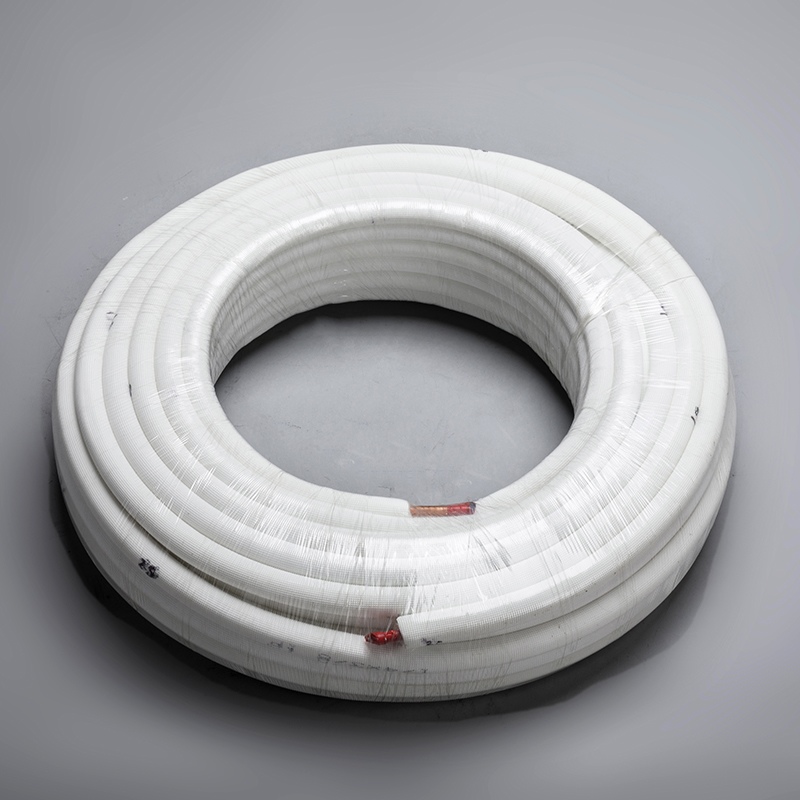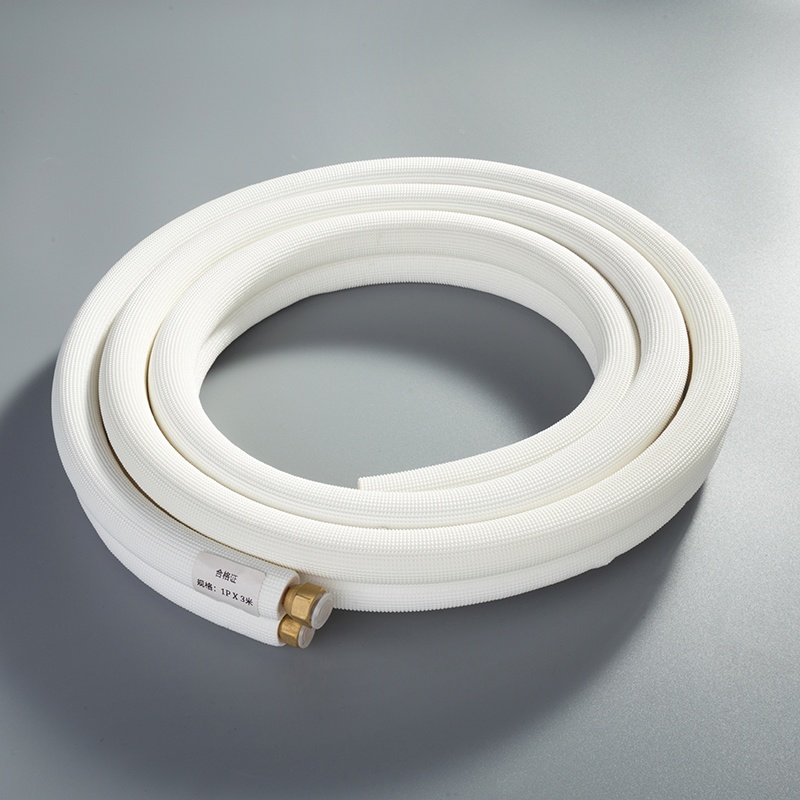Top Materials for Copper Pipe Insulation Compared

Comparing different materials for copper pipe insulation is essential for energy efficiency and cost savings. By reducing heat loss, insulating materials ensure that water remains at the desired temperature, leading to significant annual savings of $3.74 per linear foot. Moreover, a mere 10-degree Fahrenheit decrease in the water heater's setting can result in a 3-5% reduction in costs. Understanding common insulation materials and their characteristics is crucial for making informed decisions on optimizing pipe performance.
Types of Insulation Materials

Foam Insulation
Characteristics of Foam Insulation
Closed-cell foam insulation resists moisture effectively, preventing mold growth and maintaining thermal efficiency in humid environments.
Thermoplastic foams like polyethylene and EVA can be shaped into intricate forms, such as heat exchange coils, providing excellent thermal insulation for complex components.
Foam glass insulation, a newer material in HVAC insulation, offers high operating temperatures, exceptional moisture resistance, and fire resistance properties.
Benefits and Drawbacks
Benefits:
Closed-cell foam ensures durable insulation with structural integrity support.
Polyethylene and EVA foams offer versatility in shaping for various applications.
Foam glass is easy to install and molds well into tight spaces for efficient ductwork insulation.
Drawbacks:
Initial cost may be higher compared to traditional materials.
Installation complexity might require professional assistance for intricate designs.
Common Applications
Foam insulation finds extensive use in:
Heat exchange coils for thermal regulation.
Structural components requiring both insulation and support.
Ductwork where tight spaces demand flexible installation solutions.
Rubber Insulation
Characteristics of Rubber Insulation
Rubber pipe insulation, especially closed-cell variants, exhibits superior moisture resistance compared to foam options.
Longevity and durability are key features of rubber insulating materials, ensuring prolonged effectiveness over time.
Benefits and Drawbacks
Benefits:
Closed-cell rubber resists moisture effectively, reducing the risk of mold growth.
Durability ensures long-lasting performance with minimal maintenance requirements.
Drawbacks:
Higher upfront costs compared to some foam alternatives may deter budget-conscious consumers.
Common Applications
Rubber insulation is commonly applied in:
Areas with high humidity levels where moisture resistance is crucial.
Environments requiring long-term insulating solutions with minimal upkeep needs.
Fiberglass Insulation
Characteristics of Fiberglass Insulation
Fire-resistant properties make fiberglass a reliable choice for insulating applications where safety is paramount.
Familiarity among contractors due to its affordability and insect-resistant nature makes fiberglass a popular option.
Benefits and Drawbacks
Benefits:
Fire resistance enhances safety measures in various settings.
Availability in blown-in products facilitates easy installation processes for DIY enthusiasts.
Drawbacks:
Tiny fibers may cause skin irritation during handling without proper protection measures.
Common Applications
Fiberglass insulation is widely used in:
Attic cavities and wall installations due to its affordability and fire-resistant qualities.
DIY projects where ease of installation is essential for effective home insulation solutions.
Polyethylene Insulation
Characteristics of Polyethylene Insulation
Closed-cell Structure: Polyethylene insulation features a closed-cell structure that enhances its resistance to moisture, making it an ideal choice for environments prone to humidity.
Thermal Efficiency: The thermal efficiency of polyethylene foam is notable, providing effective insulation to maintain desired temperatures in various applications.
Flexibility and Adaptability: Polyethylene insulation is known for its flexibility and adaptability, allowing it to conform easily to different pipe shapes and sizes for seamless installation.
Benefits and Drawbacks
Long-Term Durability: One of the key benefits of polyethylene insulation is its long-term durability, ensuring sustained performance over extended periods without significant maintenance requirements.
High R-Value: Polyethylene foam boasts a high R-value, indicating its excellent thermal resistance capabilities, which contribute to energy efficiency and cost savings in the long run.
Ease of Installation: The lightweight nature and flexibility of polyethylene insulation make it easy to install even in challenging or tight spaces, reducing installation time and effort.
Common Applications
HVAC Systems: Polyethylene insulation is commonly used in HVAC systems for both hot and cold water pipes due to its exceptional thermal performance and moisture resistance properties.
Plumbing Installations: Its versatility makes polyethylene foam suitable for various plumbing installations where maintaining consistent temperatures is crucial for efficient operations.
Comparison of Insulation Materials

Thermal Performance
R-Value Comparison
Polyethylene Foam Pipe Insulation offers a high R-value, ensuring exceptional thermal resistance and energy efficiency.
Rubber Insulation provides a competitive R-value, balancing thermal performance with durability for long-term insulation benefits.
Fiberglass Insulation showcases a reliable R-value, making it a cost-effective choice for various insulation applications.
Temperature Range Suitability
Polyethylene Pipe Insulation excels in maintaining temperature stability across a wide range, ideal for diverse environmental conditions.
Foam Insulation demonstrates effective temperature control capabilities, adapting well to fluctuating heat requirements.
Rubber Insulation is suitable for temperature variations, offering consistent performance in both hot and cold settings.
Installation and Maintenance
Ease of Installation
Installing Polyethylene Foam Insulation is straightforward due to its flexibility and adaptability to different pipe shapes and sizes.
Rubber Insulation stands out for its ease of installation, providing a hassle-free process even in challenging environments.
Fiberglass Insulation offers DIY enthusiasts an easy installation experience with its user-friendly application methods.
Maintenance Requirements
Polyethylene Pipe Insulation requires minimal maintenance efforts, ensuring long-lasting performance without frequent upkeep needs.
Maintaining Foam Insulation is simple and efficient, reducing the time and resources spent on regular upkeep tasks.
Rubber Insulation boasts durability with low maintenance demands, making it a cost-effective choice over its lifespan.
Cost Analysis
Initial Cost
The initial cost of Polyethylene Foam Pipe Insulation may be slightly higher but pays off with its superior thermal efficiency and longevity.
Opting for Rubber Insulation initially involves higher costs but guarantees extended insulation benefits without compromising on quality.
Choosing Fiberglass Insulation at the beginning provides a budget-friendly solution while ensuring reliable thermal performance over time.
Long-term Cost Efficiency
Investing in Polyethylene Pipe Insulation proves cost-efficient in the long run due to its durable nature and energy-saving capabilities.
Long-term cost efficiency is evident with Foam Insulation, offering sustained thermal resistance that translates into reduced operational expenses.
The longevity of Rubber Insulation contributes to long-term cost savings by minimizing the need for frequent replacements or repairs.
Choosing the Right Insulation Material
Factors to Consider
Climate and Environment
Understanding the climate where the insulation will be installed is crucial for optimal performance.
Considering the environmental conditions such as humidity levels and temperature fluctuations is essential.
Evaluating the surrounding environment helps in selecting an insulation material that can withstand specific weather challenges.
Pipe Location and Accessibility
Assessing the location of the pipes determines the exposure to external elements like sunlight or moisture.
Examining the accessibility of the pipes aids in choosing an insulation material that aligns with installation ease.
Ensuring that pipes in hard-to-reach areas have suitable insulation for long-term efficiency is important.
Practical Tips
Professional vs. DIY Installation
Hiring a professional for installation guarantees accurate fitting and adherence to industry standards.
Opting for a DIY approach provides cost-saving benefits but requires careful attention to detail during installation.
Balancing between professional expertise and personal skills ensures efficient insulation application.
Safety Precautions
Prioritizing safety measures during installation prevents potential hazards and ensures a secure environment.
Using appropriate protective gear like gloves and masks safeguards against any health risks associated with handling insulation materials.
Following safety guidelines from manufacturers minimizes accidents and promotes a safe insulation process.
In summary, evaluating the key characteristics and benefits of various insulation materials is crucial for optimizing copper pipe performance.
For final recommendations, consider Polyethylene Foam for superior thermal efficiency, Rubber Insulation for durability, or Fiberglass Insulation for cost-effectiveness.
Encouraging individuals to select the most suitable material based on their specific needs ensures efficient insulation that aligns with environmental demands.
See Also
Exploring Optimal Insulation Solutions for Copper Piping
Essential Insulation Varieties for Copper Piping Knowledge
Uncovering Premier Insulation for Your Household Piping
Advantages of Copper Tubing Over Other Materials for AC Efficiency


